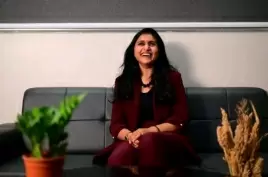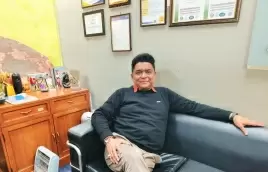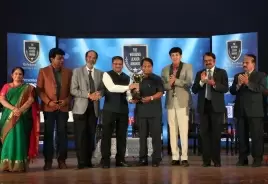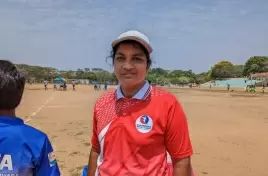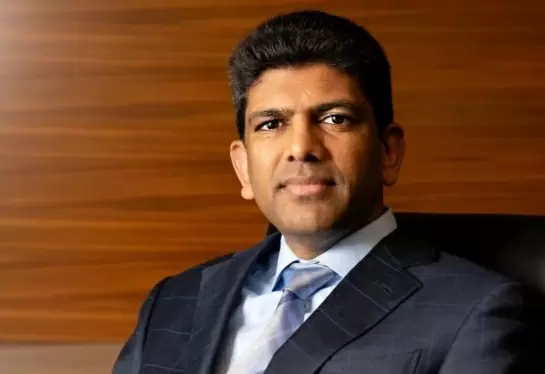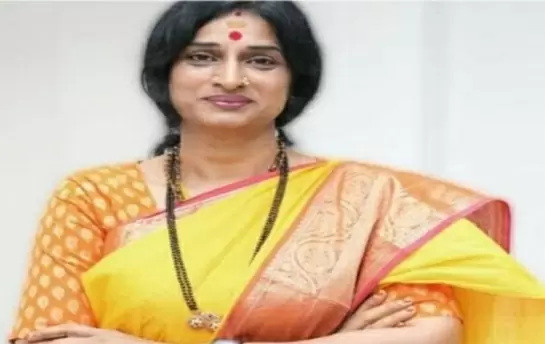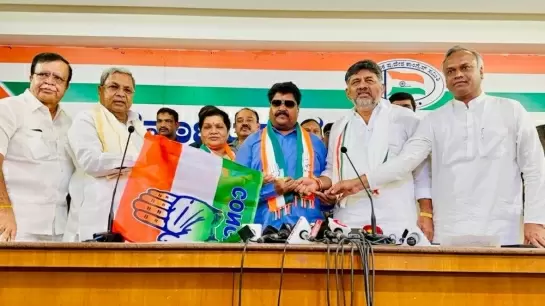How a vital clue in Rajiv assassination case disappeared into thin air

16-November-2012
Vol 3 | Issue 45
The wages of crime is punishment. In the scheme of things of the Congress First Family, the wages of selective crime is reward. This has been brought out clearly in the latest book of K Ragothaman, chief investigation officer of the Rajiv Gandhi assassination case, Conspiracy to Kill Rajiv Gandhi: From the CBI Files.
MK Narayanan, then chief of the Intelligence Bureau, had suppressed a vital piece of evidence in the form of a video tape.
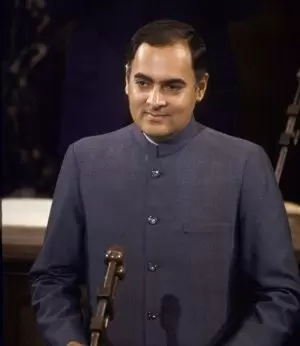 |
|
The Multi-Disciplinary Monitoring Agency set up to inquire into the conspiracy behind Rajiv’s assassination has been hibernating for more than a decade (Photos Courtesy: Nakkheeran)
|
Vazhapadi Ramamurthy, then president of the Tamil Nadu Congress Committee, had arranged with a videographer to record the entire election meeting Rajiv Gandhi was to address at Sriperumbudur on the fateful night of 21 May, 1991.
It contained vital clues leading up to ‘human bomb’ Dhanu blowing up Rajiv, how she gained access to the sterile zone three hours before her gruesome act, and the people with whom she mingled freely during the long wait till the Congress leader arrived.
It was handed over to Narayanan on 22 May itself and he wrote a letter to the then Prime Minister Chandrashekhar the same day stating that the tape was being scanned to “IDENTIFY THE LADY” (in capital letters).
The lady referred to was the assassin. D Karthikeyan, chief of the Special Investigation Team, restrained Ragothaman from pursuing the tape handed over to Narayanan.
When Karthikeyan was asked in a TV debate why he did not allow Ragothaman to pursue the impugned tape, he pleaded amnesia but he could remember all other incidents connected with the assassination in minute details. Narayanan’s letter has become a part of the Justice Verma Commission Report. He cannot deny having written it.
Causing disappearance of evidence in a capital offence is punishable with imprisonment for life under Section 201 of the IPC. And if the offence is committed by a public servant, which Narayanan was, he could be prosecuted under Section 204 IPC as well.
The sole charge against Suba Sundaram, one of the 26 accused in the assassination case and sentenced to death by the trial court, was attempt to suppress evidence. A leading news photographer of Chennai, one of his assistants, Haribabu, was engaged by the assassination squad to photograph Rajiv’s Sriperumbudur meeting.
On hearing Haribabu’s death in the explosion, Sundaram wanted to retrieve the camera. Before he could reach the spot a police man picked it up.
The prosecution maintained that had Sundaram retrieved the camera, he would have concealed the exposed film roll which turned out to be the vital clue in cracking the case.
He was never in possession of the film, yet the SIT managed to get him convicted under Section 201. The Supreme Court freed him after 11 years in prison. He died soon after his release.
Narayanan was in possession of the tell-tale video tape which he willfully suppressed from the SIT.
Prime Minister PV Narasimha Rao, convinced of Narayanan’s culpability, not only superannuated him in 1992 but also ordered the CBI to register a criminal case against him.
Such was Sonia Gandhi’s clout with the government institutions even before she edged out Sitaram Kesari as Congress president and occupied his chair, the CBI could not proceed with Case No. 1 of 1995 registered against Narayanan.
The case was given a quite burial by Karthikeyan who has been taking instructions from Narayanan. After Narasimha Rao demitted office, Narayanan was brought back as National Security Adviser and when he and P Chidambaram, then Home Minister, fell out, he was elevated as the Governor of West Bengal, a sinecure he still enjoys.
Suppression of evidence was not the only misdemeanor of Narayanan in the assassination of Rajiv.
From the time Sivarassan, leader of the assassination squad, reached Tamil Nadu in 1990, the Army intelligence had been keeping surveillance on his activities and the IB was kept informed.
On 22 March, Sivarasan was asking Pottu Amman, LTTE intelligence chief in Jaffna, over the telephone, whether to try in Chennai or in Delhi. The taped conversation was promptly conveyed to Narayanan.
Sivarasan was also in telephonic contact with Kittu, LTTE’s London representative.
On 7 May, Sivarasan and team conducted a dry run at a public meeting addressed by VP Singh in Chennai and kept Pottu Amman informed of its success. Sixteen pages of Sivarasan’s taped conversation with Pottu Amman made available to Narayanan were produced in court during the trial of the 26 accused. There is no record of any preemptive action taken by the IB in spite of the forewarning. To reward such a person, to say the least, is intriguing.
Immediately after the assassination, the Chandrashekhar government requested the Tamil Nadu Government to send a panel of three suitable names to select the chief of the SIT.
K Mohandas, who had just retired as DGP (Intelligence) of the State police, was the first choice. Chandrashekhar showed the list to Sonia Gandhi. She rejected all the three names and asked for Devarayapuram Ramasamy Karthikeyan, a Karnataka cadre IPS officer who, like his mentor Mayankote Kelath Narayanan, had been a Gandhi family loyalist but with no record of any investigative achievement.
Because of his proximity to the family right from Indira Gandhi’s time, he was given a three-year stint in Moscow as First Secretary in the Indian Embassy and a four-year stint in Sydney as Indian Tea Board representative.
After guiding the assassination investigation along the lines the Congress wanted, he was promoted to the coveted post of CBI Director and on retirement made the chief of the National Human Rights Commission. And as a crowning glory, he was awarded the Padma Sri.
At the time of the 1991 Lok Sabha election Tamil Nadu was under President’s rule. Governor Bhisma Narain Singh cautioned Rajiv against campaigning in the State for security reasons.
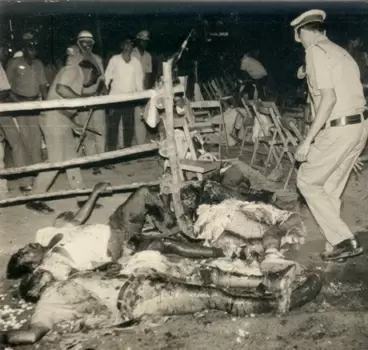 |
|
To whom did Sivarasan pay Rs.1.5 crore? One more question that begs an answer
|
The Congress had an alliance with the AIADMK and its leader Jayalalitha accepted full responsibility of campaigning for both the Congress and her party candidates and told Rajiv there was no need for him to visit the State.
Rajiv conceded to the request of Maragatham, whom he called aunty, and even agreed to spend the night in Sriperumbudur, which was vetoed by the Governor.
Sivarasan had given Rs. 5 lakhs to Lalith, son of Maragatham Chandrasekhar, Congress candidate for Sriperumbudur.
Lalith is married to a Sri Lankan woman who was staying with her parents in the Theosophical Society campus in Chennai before her marriage. Using this Sri Lanka connection, Dhanu, the human bomb, wormed her way into the Maragatham household and became a guest.
The Statesman reported that Dhanu was a house guest of the Congress candidate. A criminal defamation case was filed against this newspaper and its correspondent in Chennai by Maragatham.
The case was dropped when documentary evidence was produced to substantiate the report. It is not the contention of this writer that Maragatham did everything that facilitated the assassination with any foreknowledge. But what made Karthikeyan cover up her tracks?
Karthikeyan has taken great pains in identifying the brand name of the nine volt battery used by Dhanu to detonate the belt bomb that killed Rajiv as ‘Golden Power’ and got the teenager, Perarivalan, used by Sivarasa as an errand boy to buy it from a shop in Chennai, the death sentence which was confirmed by the Supreme Court along with that of three other bit players.
The battery containing cadmium compounds bound in zinc sheet was reduced to smithereens in the explosion, leaving hardly any trace.
But the SIT could not locate the hand bag found hanging on the shoulder of Dhanu seconds before the explosion. Sivarasan’s diary produced in the court had an entry showing he had paid Rs. 1.5 crore to some person and that Rs. 45 lakhs more was to be given to that person.
The bomb Dhanu used to kill Rajiv had RDX which was supplied to military only and not available in the open market. Circumstantial evidence shows the Rs. 1.5 crore Sivarasan paid was to the person who supplied the RDX. Why didn’t Karthikeyan investigate this angle?
In any assassination of this nature, who benefited from it would form the main line of investigation which Karthikeyan and his team totally ignored. The moribund Multi-Disciplinary Monitoring Agency set up to inquire into the conspiracy behind Rajiv’s assassination has been hibernating for more than a decade.
Will Manmohan Singh activate the MDMA? The nation wants to know the truth behind the conspiracy.
Sam Rajappa is Consulting Editor of The Weekend Leader


